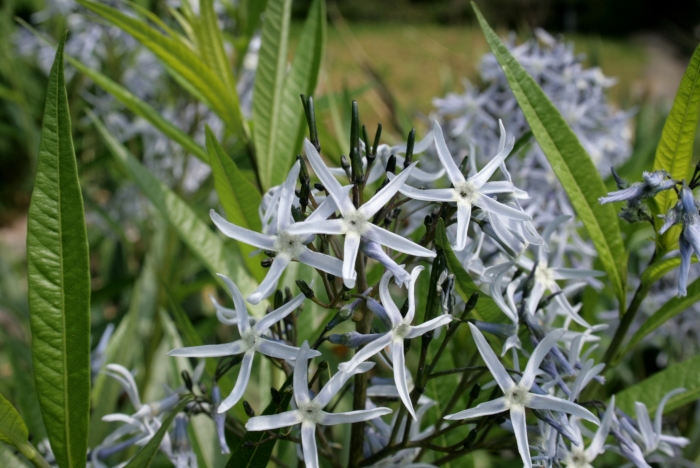Eastern Bluestar
(Amsonia tabernaemontana)
Eastern Bluestar (Amsonia tabernaemontana)
/
/

Sten Porse
CC BY-SA 3.0
Image By:
Sten Porse
Recorded By:
Copyright:
CC BY-SA 3.0
Copyright Notice:
Photo by: Sten Porse | License Type: CC BY-SA 3.0 | License URL: https://creativecommons.org/licenses/by-sa/3.0 | Uploader: Sten | Publisher: Wikimedia Commons | Title: Amsonia-tabernaemontana-flowers.JPG | Notes: {{Information |Description=Carex testacea 2 |Source=https://www.flickr.com/photos/82479320@N00/5613275367/in/photolist-96hibM-9y2vcM/ |Date=07.04.2015 |Author= Megan Hansen |Permission=Yes |other_versions= }} ==... |









































































Estimated Native Range
Summary
Amsonia tabernaemontana, commonly known as Eastern Bluestar, is a deciduous perennial herb native to moist meadows, prairies, and open woodlands in the Central and Southeastern United States. It typically grows to a height and width of 2-3 feet (0.6-0.9 meters). The plant features willow-like leaves and clusters of small, star-shaped, pale blue flowers that bloom in late spring to early summer. The flowers are quite showy and are followed by attractive seed pods in the fall. In autumn, the foliage turns a striking golden-yellow, adding seasonal interest to the garden.
Eastern Bluestar is valued for its low maintenance requirements, drought tolerance once established, and its ability to attract butterflies. It is often used in borders, native plant gardens, and as part of naturalized plantings. This plant prefers full sun to part shade and adapts well to various soil types, though it thrives in well-drained soils. While generally pest and disease-free, it can occasionally suffer from rust or leaf spots. Eastern Bluestar is not known for aggressive roots or invasiveness, making it a safe choice for a variety of garden settings.CC BY-SA 4.0
Eastern Bluestar is valued for its low maintenance requirements, drought tolerance once established, and its ability to attract butterflies. It is often used in borders, native plant gardens, and as part of naturalized plantings. This plant prefers full sun to part shade and adapts well to various soil types, though it thrives in well-drained soils. While generally pest and disease-free, it can occasionally suffer from rust or leaf spots. Eastern Bluestar is not known for aggressive roots or invasiveness, making it a safe choice for a variety of garden settings.CC BY-SA 4.0
Plant Description
- Plant Type: Herb
- Height: 2-3 feet
- Width: 2-3 feet
- Growth Rate: Moderate
- Flower Color: Blue, White
- Flowering Season: Spring
- Leaf Retention: Deciduous
Growth Requirements
- Sun: Full Sun, Part Shade
- Water: Medium
- Drainage: Medium
Common Uses
Bank Stabilization, Bee Garden, Bird Garden, Border Plant, Butterfly Garden, Deer Resistant, Drought Tolerant, Hummingbird Garden, Low Maintenance, Potted Plant, Rabbit Resistant, Rock Garden, Salt Tolerant, Showy Flowers, Street Planting, Water Garden
Natural Habitat
Moist meadows, prairies, and open woodlands in the Central and Southeastern United States
Other Names
Common Names: Texas-Star, Texas-Amsonie, Amsonia, Willow Slimpod
Scientific Names: , Amsonia tabernaemontana, Amsonia glaberrima, Tabernaemontana amsonia, Amsonia amsonia, Amsonia latifolia, Amsonia salicifolia var. ciliolata, Amsonia tristis, Ansonia latifolia, Tabernaemontana humilis
GBIF Accepted Name: Amsonia tabernaemontana Walter